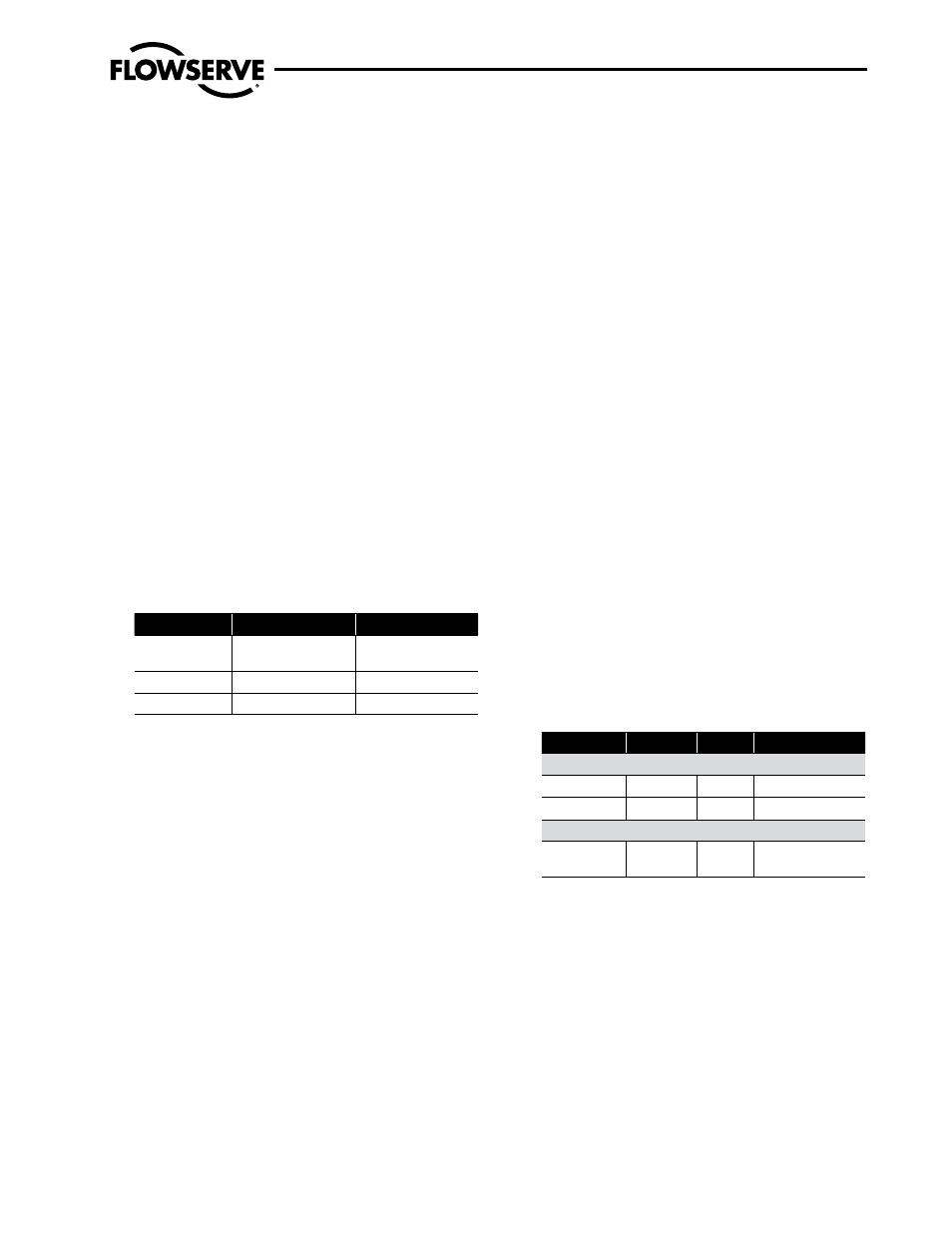Vogt valves – Flowserve Vogt Forged Steel Gate User Manual
Page 21

Flow Control
Vogt Valves
FCD VVENIM2000-02
Forged Steel Gate, Globe and Check Valves
21
4.8 Recommendations for Field
Welding of Small Alloy Steel
Socket Weld Valves
1. Evaluation of Code Requirements Prior to welding, construc-
tion code requirements should be reviewed (ASME Section I,
VIII, IX, B31.1, B31.3, etc.). Applicable code requirements may
supersede these recommendations. In the absence of specific
code requirements, the guidelines of ASME Section IX are
recommended for qualification.
2. Selection of Process Based on the size of the valve and the
skill of the welder, either the SMAW (stick) or GTAW (Tig) pro-
cess is recommended. SMAW is generally preferred, although,
GTAW offers more control (at the expense of speed) and may be
preferred for 3/4" and smaller valves.
3. Selection of Weld Filler Metal For SMAW, use
3
/
32
" electrode
on the first pass with
1
/
8
" for subsequent passes.
1
/
8
" and
5
/
32
"
electrodes may be used effectively on larger valves.
3
/
32
" is
recommended for GTAW.
1
/
16
" and
1
/
8
" may also be used suc-
cessfully. Based on the alloy type, the following filler metals are
recommended:
Valve Material
SMAW Filler Material
GTAW Filler Material
A182 F5
E502-15 or 16
electrodes
ER502
A182 F11
E8018-B2
ER80S-B2
A182 F22
E9018-B3
ER9OS-B3
Care should be taken to use only SMAW electrodes that have
been kept essentially free of exposure to moisture. Exposure of
coated electrodes to moisture can cause high levels of hydrogen
in the weld which can result in delayed cracking, especially with
hardenable alloys. Electrodes should be kept in heated electrode
ovens operating at 250–300°F (120–150°C) when not being
used. Limit atmospheric exposure to eight hours maximum
without reheating. Electrodes may be used immediately
following opening of the hermetically sealed containers in which
they are normally supplied.
4. Selecting the Welder Most construction codes require a
welder to qualify prior to making a production weld. Welder
performance qualification provides some assurance that the
production weld will be of good quality since the welder has
proven, through testing, that he can make a good weld. Care
should be taken in comparing the welder’s qualification with the
code requirements to assure that the welder has qualified with
an appropriate test for the intended production weld.
5. Joint Cleanliness The area in-way-of welding should be
cleaned to remove, dirt, oil, and protective coatings. This should
be done prior to fit-up or residue in the joint overlap will not
be removed. Sanding, grinding, or wire brushing is usually
adequate. Solvents may be necessary, if oil is to be removed.
6. Fit-up (Socket Weld Valves) In order to gauge fillet weld size
after welding, place a circumferential mark 1" from the engaging
pipe end prior to welding. Bottom out the pipe engagement into
the socket and pull it back approximately
1
/
16
" to allow for weld
shrinkage. Note the dimension from the mark to the valve pipe
end.
Tack welds should be contoured to allow for easy inclusion into
the final weld
7. Welding Technique
a. Prior to welding, the valve should be lightly closed. Where
possible, attach the electrical ground to the adjoining pipe
on the same side of the valve as the weld being made. Do
not attach the ground to the handwheel or upper structure of
the valve or arcing across the valve seating surfaces could
occur.
b. Where possible, welding should be done in the flat or
horizontal position. Where vertical welding is necessary,
progression should be upward (vertical down welding is
prone to lack-of-fusion).
c. Preheat: A minimum preheat of 350°F (175°C) is recom-
mended for alloy steels.
d. Welding parameters: The following welding parameters may
be used as a guide:
Electrode
Current
Voltage Shielding Gas
SMAW
3
/
32
"
70-90 A
*
N/A
1
/
8
"
90-110 A
*
N/A
GTAW
3
/
32
"
75-100 A
13-14 V
100% Argon at
15-20 CFH
*Use as close and tight an arc as possible.
e. A minimum of two layers should be used for all socket
welds. This will decrease the chance of leaking even if one
pass contains a weld defect.
f. Postweld Heat Treatment: Due to controls on thickness and
chemical composition, postweld heat treatment of Vogt F11
and F22 alloy steel valves is not normally required. Postweld
heat treatment can reduce weld hardness and weld stresses.
However, it is also possible to damage valve components
at high temperatures. Refer to applicable governing codes
to determine if postweld heat treatment is required. Contact
Flowserve for further information if postweld heat treatment
is required.
